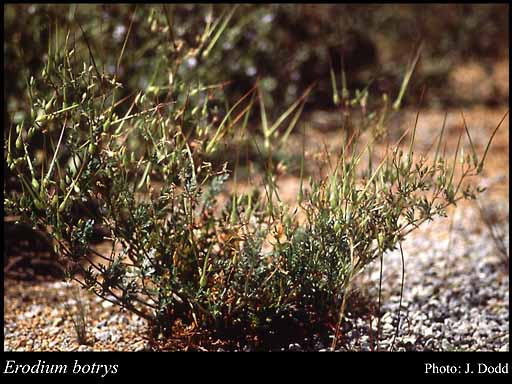- Reference
- Amoen.Ital. 35 (1819)
- Conservation Code
- Not threatened
- Naturalised Status
- Alien to Western Australia
- Name Status
- Current
Ascending or decumbent annual, herb, 0.01-0.2 m high. Fl. blue-purple, Aug to Nov.







Distribution
- IBRA Regions
- Avon Wheatbelt, Coolgardie, Esperance Plains, Geraldton Sandplains, Jarrah Forest, Mallee, Nullarbor, Swan Coastal Plain, Warren.
- IBRA Subregions
- Dandaragan Plateau, Eastern Goldfield, Fitzgerald, Katanning, Lesueur Sandplain, Merredin, Northern Jarrah Forest, Nullarbor Plain, Perth, Southern Cross, Southern Jarrah Forest, Warren, Western Mallee.
- IMCRA Regions
- Central West Coast, Leeuwin-Naturaliste.
- Local Government Areas (LGAs)
- Albany, Armadale, Bayswater, Beverley, Bruce Rock, Busselton, Capel, Chittering, Cockburn, Collie, Coolgardie, Coorow, Cunderdin, Dowerin, Gingin, Gnowangerup, Goomalling, Gosnells, Kalgoorlie-Boulder, Kellerberrin, Kent, Kondinin, Koorda, Kulin, Lake Grace, Mandurah, Manjimup, Melville, Merredin, Mingenew, Mundaring, Murray, Narembeen, Narrogin, Nedlands, Northam, Perth, Pingelly, Quairading, Ravensthorpe, Rockingham, Serpentine-Jarrahdale, South Perth, Subiaco, Swan, Toodyay, Victoria Park, Victoria Plains, Wagin, Wanneroo, Waroona, Williams, Wongan-Ballidu, Yilgarn, York.
Management Notes (for the Swan NRM Region)
Alternative Names. Broadleaf Filaree, Mediterranean Stork's-bill.
General Biology. Growth form. Herb. Life form. Annual. Reproduction. Seed. Dispersal. Adhesion. Seedbank persistence. 3+ years.
Notes. Germinates mainly in autumn/winter but also in spring/summer if moisture is available. Grows rapidly on fertile soils, enabling it to be competitive with other species. Germination cues depend more on temperature than light. Early germinants emerging in response to summer rain have high mortality compared with late cohorts emerging at the onset of autumn rain, however early cohorts tend to have greater reproductive output. Has self-burying seeds, characterised by a hydroscopic awn, which allows higher seedling survivorship and establishment rates.
Additional information. Origin. Northern Africa, the Mediterranean region, southern Europe.
Suggested method of management and control. Apply Lontrel® at 6 ml/10 L + wetting agent applied before flowering or Verdict 520® at 1.5 ml/ 10 L + wetting agent. Read the manufacturers' labels and material safety data sheets before using herbicides. For further information consult the Australian Pesticides and Veterinary Medicines Authority to determine the status of permits for your situation or state.
Management Calendar
| Calendar Type | Jan | Feb | Mar | Apr | May | Jun | Jul | Aug | Sep | Oct | Nov | Dec | Comments |
|---|---|---|---|---|---|---|---|---|---|---|---|---|---|
| Germination | O | O | O | Y | Y | Y | O | O | O | O | O | O | Depends on moisture available |
| Active Growth | Y | Y | Y | Y | Y | Y | |||||||
| Flowering | Y | Y | Y | Y | |||||||||
| Fruiting | Y | Y | Y | ||||||||||
| Herbicide Treatment | Y | Y | Y |
Legend: Y = Yes, regularly, O = Occasionally, U = Uncertain, referred by others but not confirmed.
References
- Arnold, G.W., Weeldenberg, J.W. & Leone, J. (1998) Herbicide control of exotic annual plant species in Acacia acuminata - Eucalyptus loxophleba woodland in south-western Australia and effects on native ground flora. Plant Protection Quarterly, 13 (1): 39-43.
- Brown, K. & Brooks, K. (2002) Bushland Weeds: A Practical Guide to their Management. Environmental Weeds Action Network, Greenwood.
- Cousens, R.D., Daleb, M.R.T., Taylor, J., Law, R., Moerkerke, M. & Kembel, S.W. (2006) Causes of pattern in plant communities where environmental change is rapid and species longevity is short. Journal of Vegetation Science, 17 (5): 599-614.
- Guerrero, F.P. & Williams, W.A. (1975) Competition of Erodium botrys and Trifolium subterraneum for phosphorus. Journal of Range Management, 28 (4): 275-278.
- Hussey, B.M.J., Keighery, G.J., Dodd, J., Lloyd, S.G. & Cousens, R.D. (2007) Western Weeds. A guide to the weeds of Western Australia. 2nd Edition. The Plant Protection Society of Western Australia, Victoria Park.
- Lulow, M.E., Young, T.P., Wirka, J.L. & Anderson, J.H. (2007) Variation in the initial success of seeded native bunchgrasses in the Rangeland Foothills of Yolo County, California. Ecological Restoration, 25 (1): 20-28.
- McCowan, R.L. & Willams, W.A. (1968) Competition for nutrients and light between the annual grassland species Bromus mollis and Erodium botrys. Ecology, 49 (5): 981-990.
- Moore, C.B. & Moore, J.H. (2002) Herbiguide, the pesticide expert on a disk. Herbiguide, PO Box 44 Albany, Western Australia, 6330.
- Moore, J.H. & Wheeler, J. (2008) Southern weeds and their control. DAFWA Bulletin 4744.
- Rice, K.J. (1984) Plant life history variation and colonization dynamics in a variable environment: The population biology of two sympatric winter annuals, Erodium botrys and E. brachycarpum (demography, dormancy and competition). University of California, Davis. Thesis.
- Rice, K.J. (1985) Responses to Erodium to varying microsites: the role of germination cueing. Ecology, 66 (5): 1651-1657.
- Rice, K.J. & Menke, J.W. (1985) Competitive reversals and environment-dependent resource partitioning in Erodium. Oecologia, 67 (3): 430-434.
- Stamp, N.E. (1984) Self-burial behaviour of Erodium cicutarium. Journal of Ecology, 72: 611-620.
- Stamp, N.E. (1989) Seed dispersal of four sympatric grassland annual species of Erodium. Journal of Ecology, 77: 1005-1020.
- USDA, ARS, National Genetic Resources Program (2009) Germplasm Resources Information Network - (GRIN). National Germplasm Resources Laboratory, Beltsville, Maryland. URL: https://npgsweb.ars-grin.gov/gringlobal/taxon/taxonomysimple.aspx - Accessed October 2009.
- Young, J.A., Evans, R.A. & Kay, B.L. (1975) Dispersal and germination dynamics of Broadleaf Filaree, Erodium botrys (Cav.). Agronomy Journal, 67: 54-57.